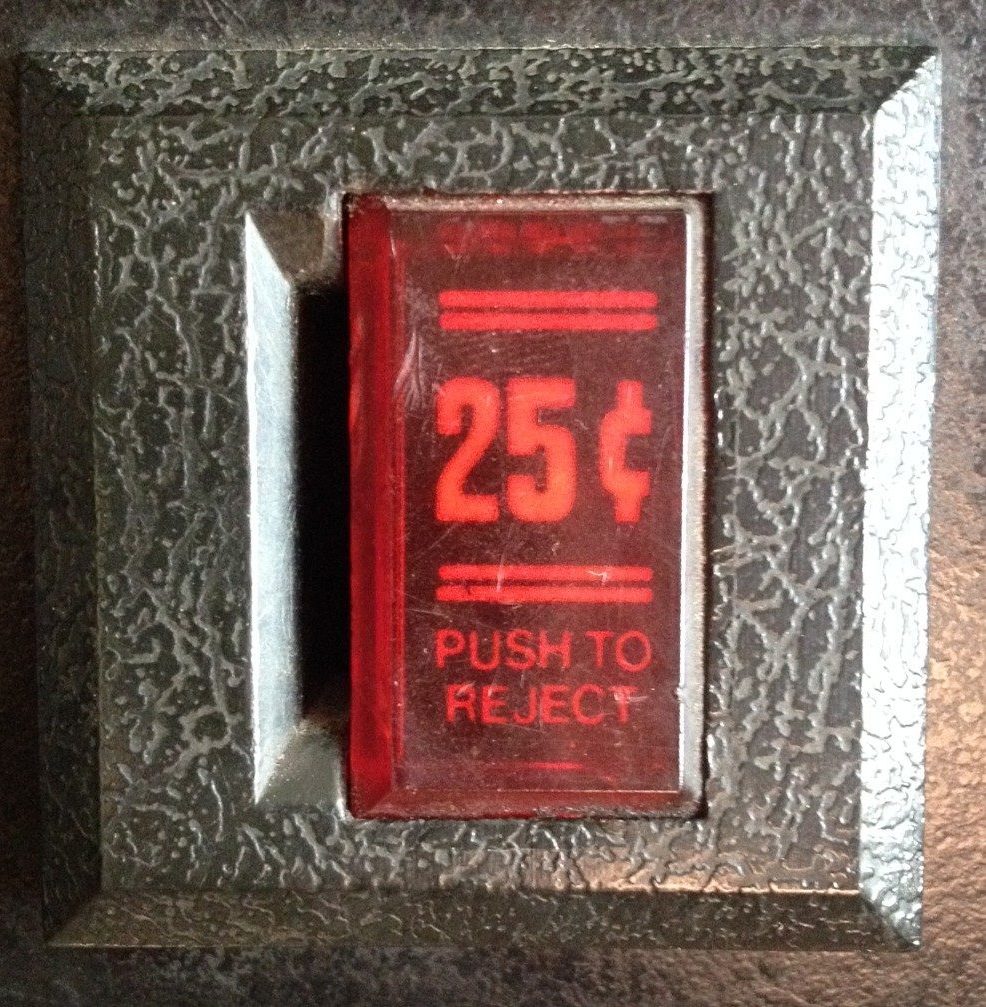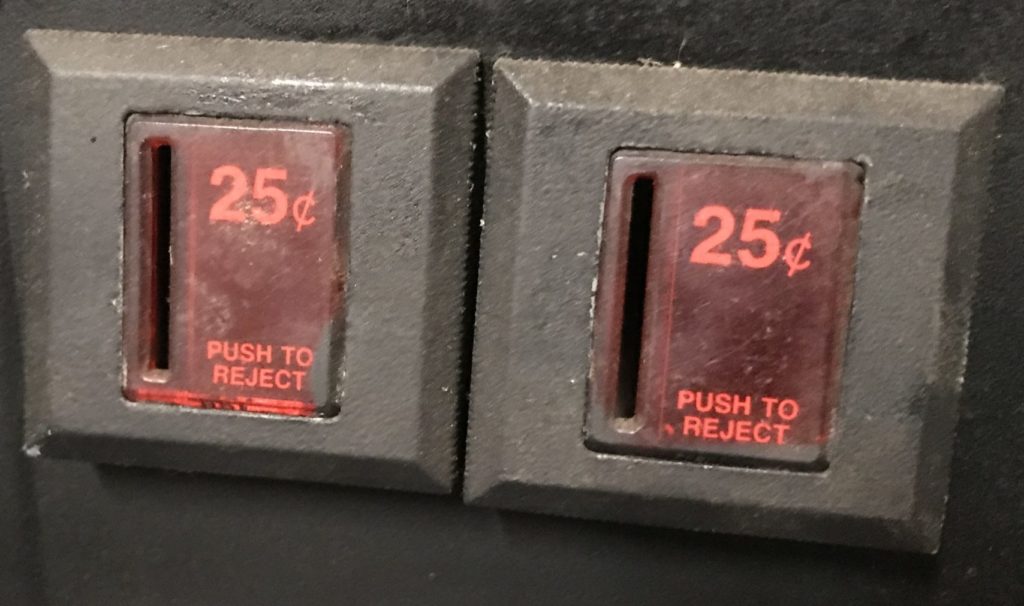This question is actually one of the things that made me start taking pictures.
Here are some ways to tell Coinco doors from Coin Controls (aka WG/Happ) doors. They look pretty similar to one another.
Coinco doors use this khaki color pastic of plastic on the inside. [TODO: Insert picture.]

Coinco coin doors a the distinctive insert that fills the whole space.

Coin Controls doors use a simpler insert. Sometimes, Atari’s logo was featured on the insert as well. Of course, nothing prevented operators from moving inserts around, or replacing them with “TOKEN” inserts, but they tended to stick with the door.
A clearer indication is that the coin slot is part of the reject button on Coin Controls doors. On most Coinco doors, the button makes up one side of the slot, but the bezel itself is the left, top, and bottom. Some (possibly later) Coinco doors had the coin entry as part of the button.
Coin Controls uses metric hardware. Coinco uses imperial-unit hardware.
Coinco doors seem to have disappeared from new games sometime in the late ’80s. I had one on an APB (1987), and Williams used them for pinball until around 1988. Coinco stopped supporting the amusement industry at some point in the ’90s.
On Atari games, like Missile Command or Asteroids/Deluxe, a “pinball” door (the one that is wider than it is tall) is probably a Coinco door (or an Owl Eye door). It’s on the over/under (tall, skinny) doors where I got confused. On Star Wars, for instance, Atari used both types of these doors. (TODO: Confirm both are mentioned in manuals.)
On Williams arcade games, I think the black doors are all Coinco. (Defender had the shiny Williams pinball coin door.)
Coinco never made a dollar-bill-validator (DBV) door, so if you have a slot for a DBV, it’s likely Coin Controls/WG, Entropy, or Happ, which are easier to tell apart.